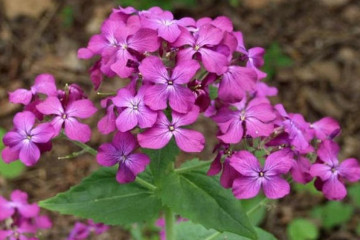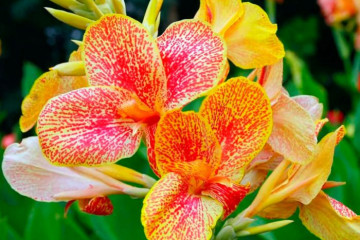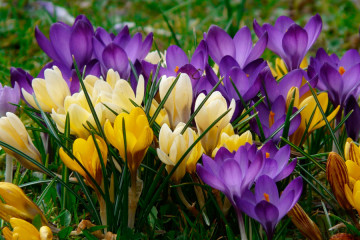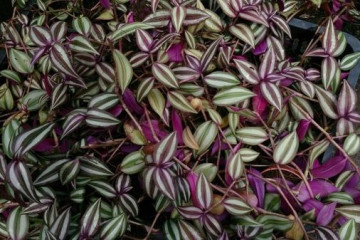Corydalis flower
Content:
As soon as the snow melts, primroses appear in the forests. Among the groves, lilies of the valley, one can observe neat tall flowers of an unusual shape. This corydalis is a plant common in the wild and in horticulture.
Corydalis is a flower of the Poppy family, subfamily Dymyankov, class Dicotyledonous. This flower is relatively uncommon in horticulture. But the forest version of this early flowering plant, for sure, everyone saw. It was precisely because of its shape and fluffy inflorescences that it was so named (the etymology of the name goes back to the Roman word for "helmet", which is somewhat similar to the flowers of the corydalis). It is also popularly called the "chicken forelock", all for the same strange flower shape.

This cute forest primrose is familiar to everyone who at least once got out into the forest in early spring.
What does a crested bird look like
Initially, the plant grew in the wild, but its unpretentiousness and vitality make it quite suitable for decorating garden beds. Corydalis is a perennial plant, it has a straight unbranched stem, delicate succulent leaves and a flower crowning a rather long stem of a quarter of a meter. Lesnaya - grows best in oak forests, you can also find it in deciduous forests, in aspen and birch forests.
The crested corydalis (as it is sometimes called) has a racemose inflorescence, in which several pale purple, pale red or lilac flowers are collected. In Russian forests, the dense corydalis is widespread; the flower of such a plant has a two-lipped.

This primrose begins to bloom as early as not a single garden plant blooms, therefore it begins to decorate the site with the very first
This plant comes from the forests of Asia and Europe. It takes root well on stony soils, therefore, if there is an uncomfortable shady piece of land in the country or a place near a pond or lake, this is the best place to settle an unpretentious and spring thing there.
According to the description of the corydalis flower, this plant in nature has a height of 20 cm, in good conditions, some varieties sometimes grow up to a meter in height. The flowers are hollow, can be white, pinkish, lilac, purple. The leaves, or grass, are carved in the corydalis, there are many of them, and have a bright juicy green color. The plant can be rhizome, tuberous.
Common varieties of corydalis
In nature, there are more than three hundred plant species, which are usually divided into two groups. The first and most common are forest species, the most unpretentious, known throughout Russia. This group includes several varieties.
Corydalis dense
This forest perennial, known to many, is widespread in Western Siberia and the European part of Russia.
Corydalis dense reaches 20 cm in height, has one cylindrical inflorescence on the stem. The plant is fragrant, it is an early honey plant.
Grows in mixed forests, loves humus soils and bright places: edges, rare forest, shrubs, ravine banks.
Chinese crested
She was recently included in the list of species of this plant. The Chinese Corydalis differs from others in that the only one can freeze out when the temperature drops below 20 degrees. In general, the plant has the common features of tuberous corydalis: pleasant aroma, attractive appearance, due to which it is willingly bred in gardens. Not only flowers, but also leaves have a decorative look.
Corydalis yellow
This species is distributed mainly in Western Europe, where it is grown, as a rule, in English hills. In the wild, the yellow crested crested weed is considered an invasive weed, as it is unpretentious, like all corydalis, and easily adapts to the conditions of mountainous terrain: it can grow on rocks and limestones.
Corydalis hollow
Another variety of this plant is the hollow corydalis. It is a widespread perennial. A species description was given to her by Karl Linnaeus, who noted that the tuber of the plant is rather large and powerful, dies off from the inside, forming a cavity. Hence the name. It blooms in spring, the inflorescences are loose, consisting of purple-pink or white flowers.
Haller's crested
Haller's Corydalis is a species of Corydalis, represented in several varieties. The flowers are lilac, white, there are also bicolor varieties. Used in home gardening, well suited for landscaping shady gardens, parks.
Corydalis blue
An ornamental plant, distinguished by beautiful blue inflorescences, dense and compact. Corydalis blue is quite rare, although it is loved by collectors.
Corydalis noble
Among other species, the noble corydalis differs in that it can grow up to 80 cm in height. It has a hollow erect stem, decorated with many leaves and a short dense cluster of yellow-orange flowers.
Crested Marshall
Marshall's Corydalis is an unpretentious plant that looks like a hollow crested corydalis. Has rather large clusters, collected from bright yellow or straw-lemon flowers. In contrast to the corydalis, the flowers are paler, larger, sometimes reaching 4 cm in length.
Corydalis hybrid
An exceptionally beautiful variety with large clear blue flowers, collected in dense large inflorescences. The plant is fragrant, melliferous, attractive to bees. Refers to rhizome species.
Corydalis forest
The most famous and most widespread species, which is found almost everywhere in Russian forests. This is an unpretentious penumbra plant, it loves humus, moist and loose soil.
Corydalis rhizome
It is more of a plant species than a variety. Rhizome Corydalis have rhizomes instead of bulbs. In addition to the aforementioned yellow and noble, the sulfur-yellow corydalis also belongs to the rhizomes.
Crested corydalis
It is a coastal species, often found on river banks, in pebbles and limestones. It blooms with yellow flowers and is currently a rare plant.
There are two types of annuals: Touch-me-not and evergreen, both quite rare and rare.
Care features
Now about how the corydalis looks like planting and caring for it in the open field.
Priming
Rhizome plants need shaded areas and humus-rich turf soil.
Watering mode
Those who decide to move the plant to their garden should not expect any unpleasant surprises from it.This flower grows very easily, requiring nothing but a shaded area and periodic watering. It is not necessary to water it a lot and often, but drought also harms the plant. Tuberous to the sun are more favorable, they can grow on lawns, meadows, near paths, they prefer loamy, loose or sandy loam soil.
Top dressing
Is it necessary to apply fertilizers under such an unpretentious flower? In the forest, it grows by itself. In fact, only forest crested beetles require some participation - under them, sod land or humus is introduced into the spring digging. The rest do not need additional feeding.
In winter, during dormancy
When the plant ends the active period of flowering and fruiting, it falls into a dormant state. This happens with tuberous species that turn yellow, dry out, it may seem that they have died. This is not so - they are resting, this is the resting phase. The tubers lie in the ground, they are not afraid of either drought, or even complete mowing of the ground part. At this time, the tubers can be replanted, although finding them in the soil is sometimes difficult.
Corydalis usually tolerate winter easily, they are highly winter-hardy.
When and how it blooms
Types of flowers
Corydalis flowers always grow in lush inflorescences, they can be more or less elongated downward. The sweet nectar that accumulates in the spurs attracts bumblebees. Corydalis flowers differ in color: they can be yellow and white, pink and lilac, blue and purple.
Flower shapes
More often found in inflorescences, but there may be single flowers. Flowers are honey plants, each has a spur in the upper part, in which insects find nectar. Fading away, the plant forms a capsule with seeds.
Flowering period
In natural conditions, it blooms in early spring, in a garden, the plant can bloom from May to September, although some garden species bloom in late April.
How the corydalis reproduces
The easiest breeding method is to plant ready-made tubers. In August and early autumn, a large selection of tuberous crested beetles appears in stores, they can be planted in a pot or left in a perforated bag with sawdust, and in spring they can be taken out into the open ground.
The second method is the division of tubers, which is done directly before planting. Since they are planted in the spring, they are divided at this time. Fall split tubers can be potted until spring and kept in the room. The only problem is that by division it is possible to propagate limited varieties that form adventitious nodules.
Germinating seeds
By seeds, the plant often propagates simply by self-sowing. If you need to sow by hand, then the seeds are shaken out of the seed pods and immediately transferred to the pot. Watered, preventing the seeds from drying out.
Corydalis transplant
Corydalis are transplanted at any time, including during flowering. First, the upper ground part is cut off, then the plant is transferred along with a lump of earth to a new place. The matter is simple, the child can cope with it. They are planted, deepening 6-7 cm or deeper if the tuber is large.
Possible growing problems
In nature, the plant lives simply and without any conditions, this property is preserved on the territory of the garden. Corydalis pests, despite its unpretentiousness, are still susceptible. Among diseases, fungi and viruses are dangerous; foliage and stems suffer from them. Having found an infection on the flower bed, the diseased parts must be removed and burned.
What forest can do without primroses! It is a pity that they are not yet very common in cultural gardening. The photo below shows how beautiful a crested bird can look when transferred to the garden.So far, she appears more in scientific reports on primroses, but, who knows, maybe soon it will become part of guides about the most popular varieties of garden flower crops.

















